Open Journal of Optimization
Vol.2 No.2(2013), Article ID:33233,6 pages DOI:10.4236/ojop.2013.22006
Existence of Solutions to Path-Dependent Kinetic Equations and Related Forward-Backward Systems
1Department of Statistics, University of Warwick, Coventry, UK
2Department of Mathematics and Statistics, University of Strathclyde, Glasgow, UK
Email: v.kolokoltsov@warwick.ac.uk, w.yang@strath.ac.uk
Copyright © 2013 Vassili Kolokoltsov, Wei Yang. This is an open access article distributed under the Creative Commons Attribution License, which permits unrestricted use, distribution, and reproduction in any medium, provided the original work is properly cited.
Received March 29, 2013; revised May 3, 2013; accepted May 16, 2013
Keywords: Kinetic Equation; Mean Field Control; Global Existence; Path Dependence; Nonlinear Markov Process; Coupled Backward-Forward Systems
ABSTRACT
This paper is devoted to path-dependent kinetics equations arising, in particular, from the analysis of the coupled backward-forward systems of equations of mean field games. We present local well-posedness, global existence and some regularity results for these equations.
1. Introduction
For a Banach space B we denote by B* the dual Banach space of B. The pairing between  and
and 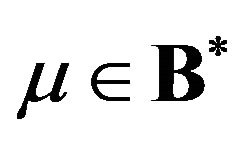 is denoted by
is denoted by . The norm in B* is defined by
. The norm in B* is defined by
![]() . For a
. For a , we denote by
, we denote by
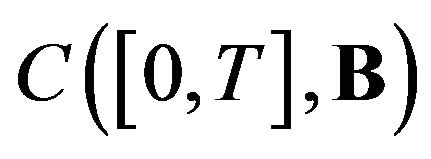 the Banach space of continuous curves
the Banach space of continuous curves  equipped with the norm
equipped with the norm .
.
A deterministic dynamic in  can be naturally specified by a vector-valued ordinary differential equation
can be naturally specified by a vector-valued ordinary differential equation
 (1)
(1)
with a given initial value , where the mapping
, where the mapping  is from
is from  to
to . More generally, one often meets the situations when
. More generally, one often meets the situations when  does not belong to
does not belong to , but to some its extension. Namely, let
, but to some its extension. Namely, let  be a dense subset of
be a dense subset of , which is itself a Banach space with the norm
, which is itself a Banach space with the norm . A deterministic dynamic in
. A deterministic dynamic in  can be specified by Equation (1), where the mapping
can be specified by Equation (1), where the mapping  is from
is from  to
to . Written in weak form, Equation (1) means that, for all
. Written in weak form, Equation (1) means that, for all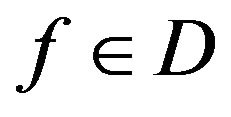 ,
,
 (2)
(2)
In many applications, Equation (2) appears in the form
 (3)
(3)
where the mapping  is from
is from  to bounded linear operators
to bounded linear operators  such that, for each pair
such that, for each pair ,
,  generates a strongly continuous semigroup in
generates a strongly continuous semigroup in . Of major interest is the case when
. Of major interest is the case when  is the space of measures on a locally compact space. It turns out that, in this case and under mild technical assumptions, an evolution (2) preserving positivity has to be of form (3) with the operators
is the space of measures on a locally compact space. It turns out that, in this case and under mild technical assumptions, an evolution (2) preserving positivity has to be of form (3) with the operators  generating Feller processes, see Theorems 6.8.1 and 11.5.1 from [1].
generating Feller processes, see Theorems 6.8.1 and 11.5.1 from [1].
Equation (3) contains most of the basic equations from non-equilibrium statistical mechanics and evolutionary biology, see monograph [1] for an extensive discussion.
In this paper we are mostly interested in yet more general equation. Namely, let  be a closed convex subset of
be a closed convex subset of , which is also closed in
, which is also closed in . For a
. For a , let
, let  denote a closed convex subset of
denote a closed convex subset of
 consisting of curves with values in
consisting of curves with values in , and
, and  a closed convex subset of
a closed convex subset of
 , consisting of curves
, consisting of curves 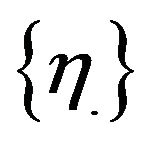 with initial data
with initial data .
.
The main object of this paper is a “path-dependent” version of Equation (3), that is
 (4)
(4)
where

maps  to bounded linear operators
to bounded linear operators . We refer to equation (4) as the general path-dependent kinetic equation. It should hold for all test functions
. We refer to equation (4) as the general path-dependent kinetic equation. It should hold for all test functions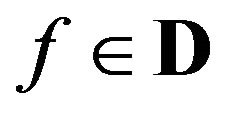 . Compared to Equation (4), Equation (3) is often referred to as a path-independent case.
. Compared to Equation (4), Equation (3) is often referred to as a path-independent case.
When the operators  only depend on the history of the trajectory of
only depend on the history of the trajectory of , that is
, that is
 (5)
(5)
we call (5) an adapted kinetic equation, where  is a shorthand for
is a shorthand for . Adapted kinetic equations can be seen as analytic analogs of stochastic differential equations with adapted coefficients, and their well-posedness can be obtained by similar methods. When the generators
. Adapted kinetic equations can be seen as analytic analogs of stochastic differential equations with adapted coefficients, and their well-posedness can be obtained by similar methods. When the generators  only depend on the future of the trajectory of
only depend on the future of the trajectory of , that is
, that is
 (6)
(6)
we call (6) an anticipating kinetic equation, where  is a shorthand for
is a shorthand for .
.
Equation (1.4) has many applications. Let us briefly explain the crucial role played by this equation in the mean field game (MFG) methodology, which is based on the analysis of coupled systems of forward-backward evolutions and which constitutes a quickly developing area of research in modern theory of optimization, see detail e.g. in [2-4].
Assume that the objective of an agent described by a controlled stochastic process 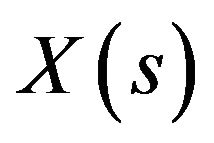 (passing through x at time t), given an evolution
(passing through x at time t), given an evolution  of the empirical distributions of a large number of other players, is to maximize (over a suitable class of controls
of the empirical distributions of a large number of other players, is to maximize (over a suitable class of controls ) the payoff
) the payoff

By dynamic programming the optimal payoff  of such an agent, which equals
of such an agent, which equals
 should satisfy certain HJB equation (backward evolution). On the other hand, when all optimal controls
should satisfy certain HJB equation (backward evolution). On the other hand, when all optimal controls  are found, the empirical measure
are found, the empirical measure  of the resulting process satisfies the controlled kinetic equation of type (3) (forward equation), that is
of the resulting process satisfies the controlled kinetic equation of type (3) (forward equation), that is
 (7)
(7)
The main consistency condition of MFG is in the requirement that the initial  coincides with the resulting
coincides with the resulting . Equalizing
. Equalizing  in (7) clearly leads to anticipating kinetic equation of type (6).
in (7) clearly leads to anticipating kinetic equation of type (6).
Our main results concern the well-posedness of adaptive kinetic Equations (5), the local well-posedness and global existence of anticipating and general path dependent kinetic equations and finally some regularity result for path-independent equations arising from their probabilistic interpretations. This yield an improved version of the existence results of the unpublished preprint [4].
2. Main Results
Let us recall the notion of propagators needed for the proper formulation of our results.
For a set S, a family of mappings 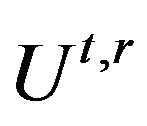 from S to itself, parametrized by the pairs of numbers
from S to itself, parametrized by the pairs of numbers  (resp.
(resp.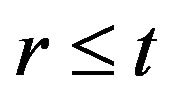 ) from a given finite or infinite interval is called a (forward) propagator (resp. a backward propagator) in S, if
) from a given finite or infinite interval is called a (forward) propagator (resp. a backward propagator) in S, if 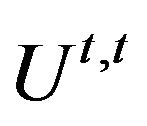 is the identity operator in S for all t and the following chain rule, or propagator equation, holds for
is the identity operator in S for all t and the following chain rule, or propagator equation, holds for  (resp. for
(resp. for ):
):

A backward propagator 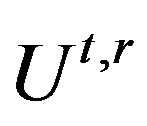 of bounded linear operators on a Banach space B is called strongly continuous if the operators
of bounded linear operators on a Banach space B is called strongly continuous if the operators  depend strongly continuously on t and r.
depend strongly continuously on t and r.
Suppose  is a strongly continuous backward propagator of bounded linear operators on a Banach space with a common invariant domain
is a strongly continuous backward propagator of bounded linear operators on a Banach space with a common invariant domain . Let
. Let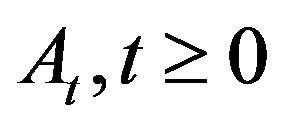 , be a family of bounded linear operators
, be a family of bounded linear operators  that are strongly continuous in
that are strongly continuous in  outside a set
outside a set ![]() of zero-measure in
of zero-measure in . Let us say that the family
. Let us say that the family  generates
generates 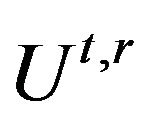 on
on  if, for any
if, for any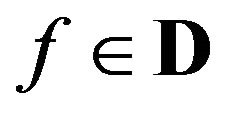 , the equations
, the equations
 (8)
(8)
hold for all s outside S with the derivatives taken in the topology of B. In particular, if the operators  depend strongly continuously on
depend strongly continuously on , equations (8) hold for all s and
, equations (8) hold for all s and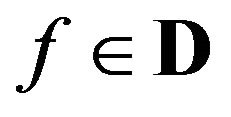 , where for
, where for  (resp.
(resp.![]() ) it is assumed to be only a right (resp. left) derivative. In the case of propagators in the space of measures, the second equation in (8) is called the backward Kolomogorov equation.
) it is assumed to be only a right (resp. left) derivative. In the case of propagators in the space of measures, the second equation in (8) is called the backward Kolomogorov equation.
We can now formulate our main results.
Theorem 2.1 (local well-posedness for general “pathdependent” case) Let  be a bounded convex subset of
be a bounded convex subset of  with
with , which is closed in the norm topologies of both
, which is closed in the norm topologies of both  and
and . Suppose that 1) the linear operators
. Suppose that 1) the linear operators  are uniformly bounded and Lipschitz in
are uniformly bounded and Lipschitz in , i.e. for any
, i.e. for any 
 (9)
(9)
 (10)
(10)
for a positive constant![]() ;
;
2) for any , let the operator curve
, let the operator curve  generate a strongly continuous backward propagator of bounded linear operators
generate a strongly continuous backward propagator of bounded linear operators  in
in ,
,  , on the common invariant domain
, on the common invariant domain , such that
, such that
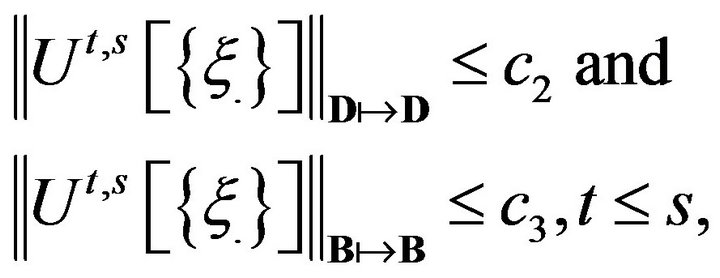 (11)
(11)
for some positive constants , and with their dual propagators
, and with their dual propagators  preserving the set
preserving the set .
.
Then, if
 (12)
(12)
the Cauchy problem (4) is well posed, that is for any , it has a unique solution
, it has a unique solution 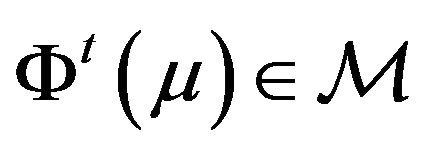 (that is (4) holds for all
(that is (4) holds for all ) that depends Lipschitz continuously on time t and the initial data in the norm of
) that depends Lipschitz continuously on time t and the initial data in the norm of , i.e.
, i.e.
 (13)
(13)
and for 
 (14)
(14)
Theorem 2.2 (global wellposedness for an “adapted” case) Under the assumptions in Theorem 2.1, but without the locality constraint (12), the Cauchy problem (5) is well posed in  and its unique solution depends Lipschitz continuously on initial data in the norm of
and its unique solution depends Lipschitz continuously on initial data in the norm of .
.
Theorem 2.3 (global existence of the solution for general “path dependent”case) Under the assumptions in Theorem 2.1, but without the locality constraint (12), assume additionally that for any  from a dense subset of
from a dense subset of , the set
, the set
 (15)
(15)
is relatively compact in . Then a solution to the Cauchy problem (4) exists in
. Then a solution to the Cauchy problem (4) exists in .
.
In Proposition 4.3 in Section 4, we give the conditions under which the compactness assumption (15) holds.
3. Proofs of the Main Results
Proof of Theorem 2.1
By duality, for any 

By (8),

Then, together with assumptions (9) and (11),
 (16)
(16)
Consequently, if (12) holds, the mapping
 is a contraction in
is a contraction in
 . Hence by the contraction principle there exists a unique fixed point for this mapping and hence a unique solution to Equation (4).
. Hence by the contraction principle there exists a unique fixed point for this mapping and hence a unique solution to Equation (4).
Inequality (13) follows directly from (4). Finally, if  and
and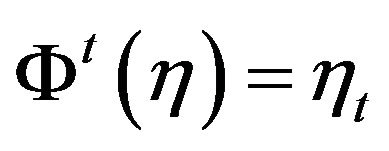 , then
, then

From (11) and (16),
 (17)
(17)
implying (14).
Proof of Theorem 2.2
For a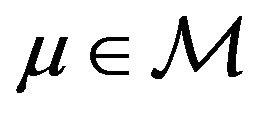 , let us construct an approximating sequence
, let us construct an approximating sequence , by defining
, by defining 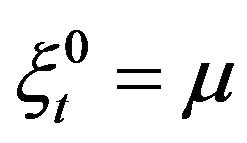 for
for  and then recursively
and then recursively 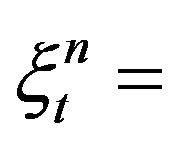
 . By non-anticipation, arguing as in the proof of (16) above, we first get the estimate
. By non-anticipation, arguing as in the proof of (16) above, we first get the estimate
![]() and then recursively
and then recursively

that implies (by straightforward induction) that, for all ,
,

Hence, the partial sums on the r.h.s. of the obvious equation

converge, and thus the sequence  converges in
converges in 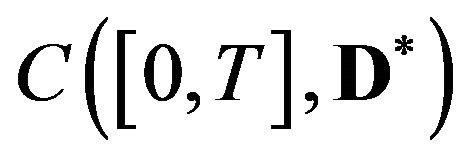 . The limit is clearly a solution to (5).
. The limit is clearly a solution to (5).
Finally, let us assume that  and
and  are some solutions with the initial conditions
are some solutions with the initial conditions  and
and  respectively. Instead of (17), we now get
respectively. Instead of (17), we now get

By Gronwall’s lemma, this implies that
 does not exceed
does not exceed
 yielding uniqueness and Lipchitz continuity of solutions with respect to initial data.
yielding uniqueness and Lipchitz continuity of solutions with respect to initial data.
Proof of Theorem 2.3
Since  is convex, the space
is convex, the space 
is also convex. Since the dual operators 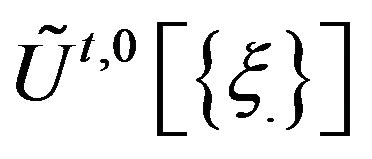 preserve the set
preserve the set , for any
, for any the curve
the curve  belongs to
belongs to  as a function of
as a function of . Hence, the mapping
. Hence, the mapping

is from  to itself. Moreover, by (16), this mapping is Lipschitz continuous.
to itself. Moreover, by (16), this mapping is Lipschitz continuous.
Denote
 .
.
Together with (13), the assumption that set (15) is compact in  for any
for any  from a dense subset of
from a dense subset of  implies that the set
implies that the set  is relatively compact in
is relatively compact in
 (by the Arzela-Ascoli Theorem).
(by the Arzela-Ascoli Theorem).
Finally, by Schauder fixed point theorem, there exists a fixed point in , which gives the existence of a solution to (4).
, which gives the existence of a solution to (4).
4. Nonlinear Markov Evolutions and Its Regularity
This section is designed to provide a probabilistic interpretation and, as a consequence, certain regularity properties for nonlinear Markov evolution  solving kinetic Equation (3) in the case when
solving kinetic Equation (3) in the case when 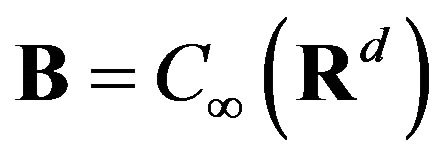 is the Banach space of bounded continuous functions f on
is the Banach space of bounded continuous functions f on  with
with , equipped with sup-norm and
, equipped with sup-norm and 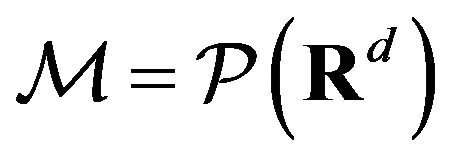 is the set of probability measures on
is the set of probability measures on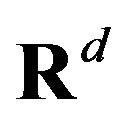 , so that
, so that  is the space of signed Borel measures on
is the space of signed Borel measures on
 and
and![]() . As a consequencewe shall present a simple criterion for the main compactness assumption of Theorem 2.3.
. As a consequencewe shall present a simple criterion for the main compactness assumption of Theorem 2.3.
We shall denote  the Banach space of bounded Lipschitz continuous functions f on
the Banach space of bounded Lipschitz continuous functions f on  with the norm
with the norm

and  (resp.
(resp.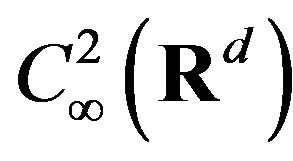 ) the Banach space of continuously differentiable functions f on
) the Banach space of continuously differentiable functions f on  such that f and the derivative
such that f and the derivative 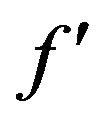 belongs to
belongs to , equipped with the norm
, equipped with the norm

resp. twice continuously differentiable with 
 and the norm
and the norm
 .
.
Let  be a family of operators in
be a family of operators in  of the Lévy-Khintchin type, that is
of the Lévy-Khintchin type, that is
 (18)
(18)
where  denotes the gradient operator; for
denotes the gradient operator; for  ,
,  is a symmetric non-negative matrix,
is a symmetric non-negative matrix,  is a vector,
is a vector,  is a Lévy measure on
is a Lévy measure on , i.e.
, i.e.
 (19)
(19)
depending measurably on , and
, and  denotes, as usual, the indicator function of the unit ball in
denotes, as usual, the indicator function of the unit ball in . Assume that each operator (18) generates a Feller process with one and the same domain
. Assume that each operator (18) generates a Feller process with one and the same domain  such that
such that  .
.
Proposition 4.1 Suppose the assumptions of Theorem 2.2 are fulfilled with generators  of “path-independent” type (3) and a probability measure
of “path-independent” type (3) and a probability measure  is given. Then there exists a family of processes
is given. Then there exists a family of processes  defined on a certain filtered probability space
defined on a certain filtered probability space  such that
such that 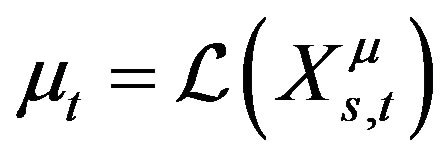 solves the Cauchy problem for Equation (3) with initial condition
solves the Cauchy problem for Equation (3) with initial condition  and
and 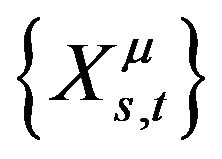 solves the nonlinear martingale problem, specified by the family
solves the nonlinear martingale problem, specified by the family , that is, for any
, that is, for any ,
,
 (20)
(20)
is a martingale.
By the assumptions of Theorem 2.2, a solution 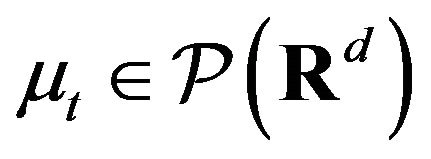 of Equation (3) with initial condition
of Equation (3) with initial condition  specifies a propagator
specifies a propagator , of linear transformations in
, of linear transformations in , solving the Cauchy problems for equation
, solving the Cauchy problems for equation
 (21)
(21)
In its turn, for any , Equation (21) specifies marginal distributions of a usual (linear) Markov process
, Equation (21) specifies marginal distributions of a usual (linear) Markov process  in
in  with the initial measure
with the initial measure![]() . Clearly, the process
. Clearly, the process  is a solution to our martingale problem.
is a solution to our martingale problem.
We shall refer to the family of processes constructed in Proposition 4.1 as to nonlinear Markov process generated by the family .
.
Using martingales allows us to prove the following useful regularity property for the solution of kinetic equations.
Proposition 4.2 Suppose the assumptions of Theorem 2.2 are fulfilled for a kinetic equation of “path-independent” type (3) with generators  of type (18). Let
of type (18). Let 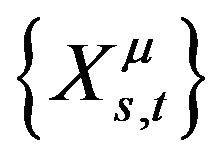 denote a nonlinear Markov process constructed from the family of generators
denote a nonlinear Markov process constructed from the family of generators  by Proposition 4.1. Assume, for
by Proposition 4.1. Assume, for 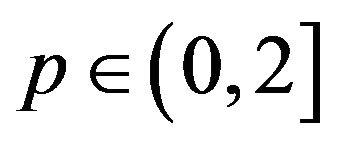 and
and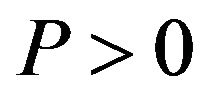 , the following boundedness condition holds:
, the following boundedness condition holds:
 (22)
(22)
and ![]() for the initial measure
for the initial measure
 .
.
Then the distributions , solving the Cauchy problem for Equation (3) with initial condition
, solving the Cauchy problem for Equation (3) with initial condition  have uniformly bounded pth moments, i.e.
have uniformly bounded pth moments, i.e.
![]() (23)
(23)
and are ![]() -Hölder continuous with respect to t in the space
-Hölder continuous with respect to t in the space , i.e.
, i.e.
 (24)
(24)
with a positive constant![]() .
.
Proof. For a fixed trajectory  with initial value
with initial value , one can consider
, one can consider  as a usual Markov process. Using the estimates for the moments of such processes from formula (5.61) of [5] (more precisely, its straightforward extension to time non-homogeneous case), one obtains from (22) that
as a usual Markov process. Using the estimates for the moments of such processes from formula (5.61) of [5] (more precisely, its straightforward extension to time non-homogeneous case), one obtains from (22) that
 (25)
(25)
This implies (23) and the estimate
 (26)
(26)
where constants  can have different values in various formulas above.
can have different values in various formulas above.
Since 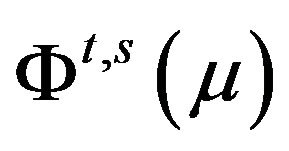 is the distribution law of the process
is the distribution law of the process ,
,
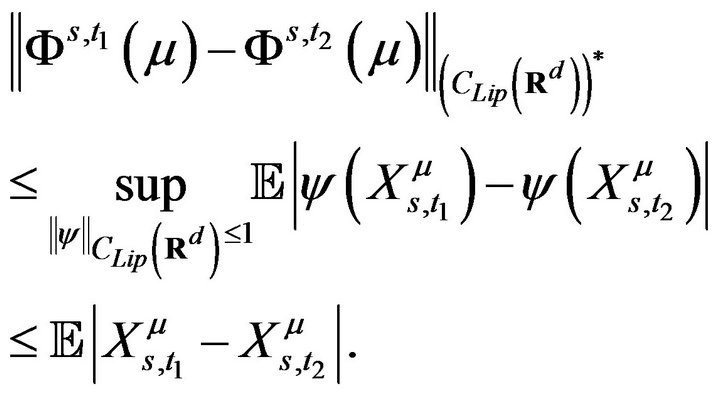 (27)
(27)
From (26), (27) and Markov property, we get (24) as required.
Remark 4.1 For diffusions with , (24) was proved in [3].
, (24) was proved in [3].
Our main purpose for presenting Proposition 4.2 lies in the following corollary that follows from (23) and an observation that a set of probability laws on 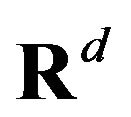 with a bounded
with a bounded ![]() th moment,
th moment,  , is tight.
, is tight.
Proposition 4.3 Under the assumptions of Theorem 2.1 for generators 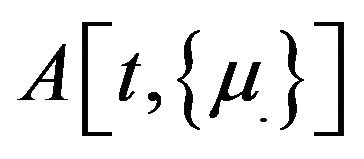 of Lévy-Khintchin type (18), but without locality condition (12), suppose the boundedness condition (22) holds for some
of Lévy-Khintchin type (18), but without locality condition (12), suppose the boundedness condition (22) holds for some 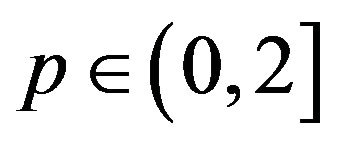 and
and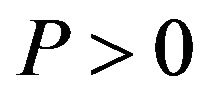 . Then the compactness condition from Theorem 2.3 (stating that set (15) is compact in
. Then the compactness condition from Theorem 2.3 (stating that set (15) is compact in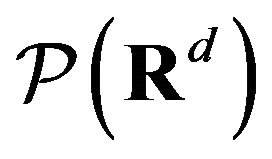 ) holds for any initial measure
) holds for any initial measure  with a finite moment of
with a finite moment of ![]() th order.
th order.
5. Basic Examples of Operators ![]()
We present here basic examples of generators that fit to our main Theorems and are relevant to the study of mean field games. The most nontrivial condition of Theorem 2.1 is 2).
The simplest examples are McKean-Vlasov diffusions defined by SDE

with corresponding generator

where the condition of Theorem 2.1 2) is known to follow, for Lipshitz continuous coefficients, from Ito’s calculus.
Another example is supplied by nonlinear Lévy processes that are specified by generators of type (18) such that all coefficients do not depend on z, i.e.

It follows from Proposition 7.1 of [1] that if the coefficients 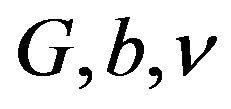 are continuous in t and Lipschitz continuous in
are continuous in t and Lipschitz continuous in ![]() in the norm of Banach space
in the norm of Banach space
 , i.e.
, i.e.

with a positive constant c, then condition 2) of Theorem 2.1 holds with . Notice also that the usual examples of a functional F on measures given by monomials
. Notice also that the usual examples of a functional F on measures given by monomials  are Lipschitz continuous (or even smooth) in space
are Lipschitz continuous (or even smooth) in space  whenever g is sufficient smooth.
whenever g is sufficient smooth.
Another example is supplied by processes (describing lots of models including spatially homogeneous and mollified Boltzmann equation and interacting ![]() -stable laws with
-stable laws with ) with generators of order at most one
) with generators of order at most one

with the Lévy measures ![]() having finite first moment
having finite first moment . As is established in Theorem 4.17 of [1], if
. As is established in Theorem 4.17 of [1], if 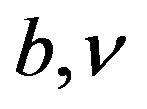 are continuous in t, Lipshitz continuous in
are continuous in t, Lipshitz continuous in ![]() and Lipschitz continuous in
and Lipschitz continuous in , that is,
, that is,  ,
,  ,
,

then condition 2) of Theorem 2.1 is satisfied with  .
.
As other examples let us mention pure jump processes with bounded rates, where the conditions of Theorem 2.1 are satisfied with , and nonlinear stablelike processes (see [1]).
, and nonlinear stablelike processes (see [1]).
Let us note finally that not all interesting evolution of type (3) satisfy our Lipschitz continuity assumption. A different type of continuity should be applied for coefficients depending on measures via quantiles, e.g. value at risk (VAR), which is analyzed in [6] inspired by preprint [7].
REFERENCES
- V. N. Kolokoltsov, “Nonlinear Markov Processes and Kinetic Equations. Cambridge Tracks in Mathematics 182,” Cambridge University Press, Cambridge, 2010.
- O. Guéant, J.-M. Lasry and P.-L. Lions, “Mean Field Games and Applications. Paris-Princeton Lectures on Mathematical Finance 2010,” Springer, Berlin, pp. 205-266.
- M. Huang, R. P. Malhamé and P. E. Caines, “Large Population Stochastic Dynamic Games: Closed-Loop MckeanVlasov Systems and the Nash Certainty Equivalence Principle,” Communications in Information and Systems, Vol. 6, No. 3, 2006, pp. 221-252.
- V. N. Kolokoltsov, J. J. Li and W. Yang, “Mean Field Games and Nonlinear Markov Processes,” 2011. arXiv:1112.3744v2
- V. N. Kolokoltsov, “Markov Processes, Semigroups and Generators,” De Gryuter, 2011.
- V. N. Kolokoltsov, “Nonlinear Diffusions and StableLike Processes with Coefficients Depending on the Median or VaR,” Applied Mathematics and Optimization, 2012. http://arxiv.org/abs/1207.5925
- D. Crisan, Th. Kurtz and Y. Lee, “Conditional Distributions, Exchangeable Particle Systems, and Stochastic Partial Differential Equations,” Preprint, 2012.
NOTES
*Supported by IPI RAN grants RFBR 11-01-12026 and 12-07-00115, and by the grant 4402 of the Ministry of Education and Science of Russia.

